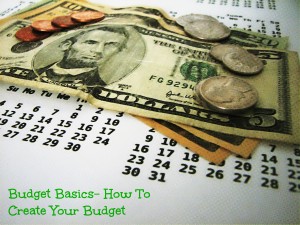I recently hit my emergency fund goal for the year thanks to a couple of windfalls I received, including an education tax credit. Thanks to my trusty budget, I knew that all the money I was about to receive could be tucked towards my goal instead of wondering where my money stood. I celebrated by purchasing a textbook for a class this week and making an appointment to get some work done on my car. Hey. Murphy’s Law, right?
A few years ago when I had first started my personal finance journey, I would not have been able to do this with my tax refund. I would have been busily paying off something I owed on or playing catch up with my bills. But that’s probably wishful thinking because what I honestly would have done was go on a shopping spree. Nothing beat that high purchasing something new and shiny until I had figured out exactly why I was buying things to make myself feel better about my life.
Creating a budget for myself, reading personal finance blogs and sticking to my guns helped me get on track and today I want to share with you the steps I followed to creating my first budget.
- Step One- Track Your Spending ( Or tally it up) The first step in any successful budget is to see what you are indeed spending your money on. Do you like to make it rain at Starbucks like me? Or perhaps you are more of a make it rain type of person while buying clothes or treating yourself to expensive dinners during a night out. I’ve purchased both of these things when I shouldn’t have and maybe your doing the same thing. You need to see where your money is currently going before you can redirect it. When tallying up your spending, you should include everything that you spend your money on including bills. Our budget includes variable and fixed expenses so don’t forget. What’s a variable and fixed expense? So glad you asked because that leads us into our next step.
- Step Two- List fixed and variable expenses with amounts needed per month. A fixed expense is something you pay every month and it is usually around the same. An example of this could be rent, internet, utilities, car payment, etc. A variable expense is usually a want item such as entertainment, clothing, eating out, etc. This is why it’s important to go through your previous spending and round out the average you have been paying each month to live the life of You & Co. ( That’s you!)
- Step Three- Add up your regular take home pay. Next, add up how much money you take home after taxes and deductions such as health insurance are taken out of your paycheck. A good way to figure this out would be examining your paycheck stub and looking for the amount listed next to “net income”. Net means after taxes and deductions have been taken out and your pay is adjusted. If it’s less than what you were told you’d be making a year, that sounds about right. Usually employers tell you what your annual gross salary would be at the time of the hiring process. Double check and make sure if it seems extremely low.
- Step Four- Compare your take home pay to see amount needed per month for your expenses to see how you fair. Now it’s time to line up the amount of money you bring home against the amount of money you are spending. This is also referred to in vs out. You should always have more money coming in then going out! If this isn’t the case, then you need to either do one of two things or both if you are a over achiever such as myself.- A. Make more money or B. Spend less. There are two sides to this argument but I can see the positive in both although making money could be earning potential could be unlimited.
- Step Five- Write out a money plan and tell those dollars where to go! A money plan is assigning your dollars where to go in regards to your spending. A good rule of thumb for budgeting is to the 50/30/20 rule. 50% of your take home pay is for essentials or fixed expenses such as housing, utilities, transportation and groceries. 30% is for wants or variable expenses and the remaining 20% is for financial commitments, such as debt and savings. You can definitely play around with the amounts but this is what is recommended and what I would suggest. If you don’t need the full 50% or 30% for fixed and variable expenses, add more to your financial commitments! Don’t spend too much in one category just because you have it. Once you spend the assigned amounts in your variable expenses, don’t spend more! Remember, you are saving your money towards other financial commitments like savings, not a shoe collection that rivals Carrie Bradshaw.
- Step Six- Observe for the next month to see how you do and if adjustments need to be made. Like any well executed plan of action, budgets also need to be observed and tinkered with. Perhaps you realized you are not making enough to cover your expenses and you are looking for ways to cut your spending. Maybe you under estimated groceries and gas. Or perhaps, you had a rent increase you forgot about. Things happen and that’s why budgets are adjustable. You may also gleefully realize you like saving money and cut back on Target runs. Also, you may need to adjust your budget monthly for items that may pop up to accommodate once a year events, such as car registration or gifts.
Now sit and watch your money grow! Be able to tell yourself where extra money can go! Or how much you spent on cat food. Either or, once the budget is made, stick to it for continual financial success.



1 Comment